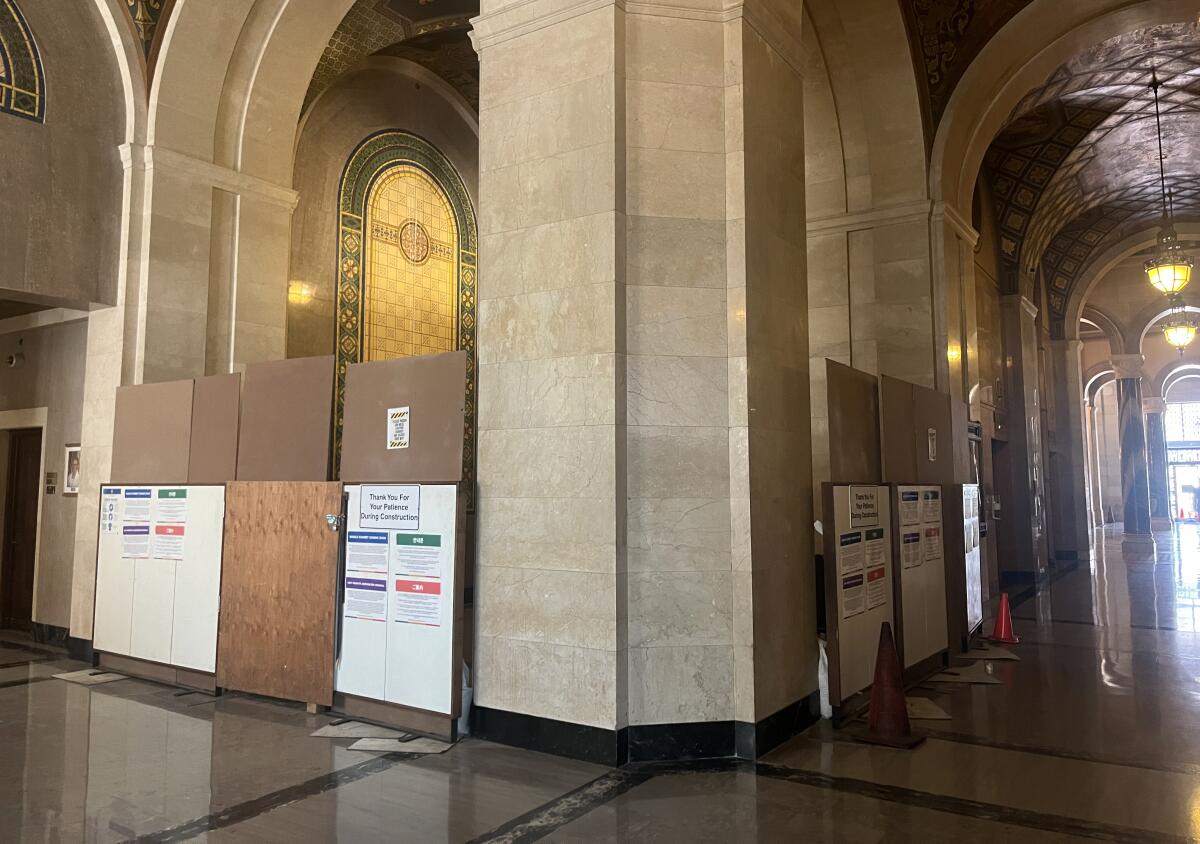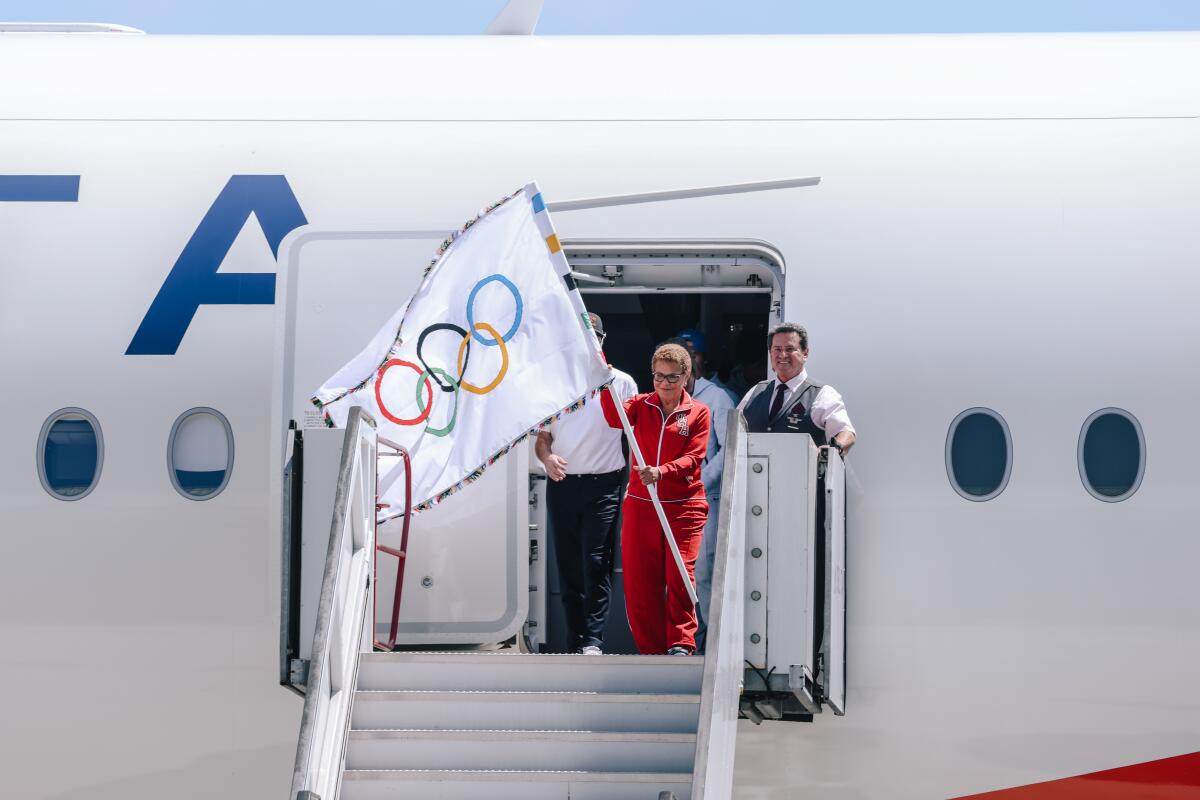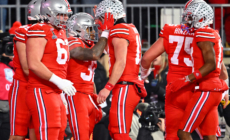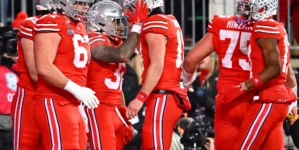-
‘The Interview’: Jonathan Roumie - 10 mins ago
-
College Football Playoff: Ohio State Routs Tennessee, Will Face Oregon in Rose Bowl - 15 mins ago
-
Alpha Prime Racing Confirms Huge Crew Chief Signing For NASCAR Xfinity Series - 50 mins ago
-
Religion Has Been in Decline. This Christmas Seems Different. - 54 mins ago
-
Chandler Smith Secures Full-Time NASCAR Drive After Joe Gibbs Racing Exit - about 1 hour ago
-
University of California Resolves Civil Rights Complaints Over Gaza Protests - 2 hours ago
-
Giants Predicted To Steal Mets’ Pete Alonso In Free Agency - 2 hours ago
-
Police Fatally Shoot Man Who Drove Pickup Into Killeen Mall, Injuring 5 - 2 hours ago
-
Former NASCAR Driver Confirms Full-Time Racing Return In 2025 - 3 hours ago
-
Trump Appoints ‘The Apprentice’ Producer as Special Envoy to Britain - 3 hours ago
Olympic flags are headed to L.A. City Hall. Not everyone is happy
The model ship from South Korea and the shrine from Japan stood on the third floor of Los Angeles City Hall for decades.
Ordinary residents and the city’s most powerful hurried by, often with barely a glance. Tour groups stopped to learn about their history.
Recently, the ship and the shrine — gifts given long ago by sister cities Busan and Nagoya — were removed to make way for Olympic flags as L.A. prepares to host the 2028 Games.
Some in the local Korean and Japanese communities are upset, saying the planned new location for the artifacts at the Los Angeles Convention Center is a poor substitute.
And City Controller Kenneth Mejia has questioned the $500,000 cost of transferring the artifacts and replacing them with the new display, amid an ongoing budget crunch.
A large clock that delighted children with its chimes and “cuckoos,” as well as a bust of Mexican President Benito Juárez, were among the historic items also moved from the grand hallway near the mayor’s office.

Construction siding rises on the third floor of L.A. City Hall. A Olympics exhibition is planned on the site where Japanese and Korean artifacts were held. August 13, 2024
(Dakota Smith/Los Angeles Times)
L.A. Mayor Karen Bass returned this week from the Paris Olympics, where she made history as the first Black female mayor to receive the Olympic flag.
As she got off the plane at LAX, she held up the white flag bearing the five Olympic rings. Casey Wasserman, chairman of LA28, had said earlier at a press event in Paris that the flag would be placed outside Bass’ City Hall office.
A spokesperson for LA28, the private group that is paying for the 2028 Games, declined to comment this week on the flag exhibit, which is part of a larger effort to decorate City Hall with Olympics items, including some from the 1984 L.A. Games..
Jieun Kim, Bass’ deputy director of Korean language communications, said the items are being moved to locations where they will be seen by more people.
“The gifts are undergoing full restoration and conservation, some of which for the first time in decades,” Kim said in a statement. “We look forward to hosting a celebration of the new displays in coordination with community members and Consuls General at the Los Angeles Convention Center once the restoration is complete.”
Scott Suh, former president of the Los Angeles Wilshire Center Koreatown Neighborhood Council, said the artifacts were at City Hall during the 1984 Olympics and should remain there today.
“After 60 years, after 40 years, you don’t remove them — you highlight them,” said Suh. “It’s just the wrong message that Mayor Karen Bass is sending.”
The model Korean ship, which Busan gave to L.A. in 1982 to celebrate the 100th anniversary of diplomatic relations between the U.S. and Korea, is known as the “turtle ship” for its resemblance to a turtle shell.
The original turtle ship was designed by Admiral Yi Sun-shin in the 16th century to defeat Japanese invaders and is often portrayed in Korean cinema and television.
“This magnificent model is now on permanent display on the third floor of our City Hall,” then-Mayor Tom Bradley wrote to the City Council in 1982.
Media outlets in South Korea have been covering the backlash to the artifacts’ removal.
According to a recent report on the Korean-language TV station MBC America, which reaches 20 million viewers in the U.S., many Koreans in L.A. believe that removing the ship from City Hall is “unilaterally demolishing a symbol that promotes Korea, U.S. and Japan relations.”
A senior official at the South Korean consulate in Los Angeles said consular officials respect the city’s decision, but the city should have consulted them before deciding to move the ship.
In an Aug. 2 letter to the city, the consulate expressed the hope that “the ‘Turtle Ship’ can be displayed in a place where more people can have access, given its historical significance.”
Nagoya became a sister city to L.A. in 1959 and gifted the shrine, known as a mikoshi, the following year.
Ten feet tall and made of black lacquered wood decorated with gold, the shrine was carried in the Nisei Week Festival parade in Little Tokyo in August 1960, The Times reported.
L.A. City Councilmember Kevin de León, whose district includes Little Tokyo, said several locals approached him about the shrine’s removal during a Nisei Week event on Monday night.
“They are adamant that it should stay in City Hall because of diplomatic protocols,” said De León, who said he hopes to serve as a “bridge” between Bass’ office and community groups.

Mayor Karen Bass holds the official Olympic flag as it returns to Los Angeles. A forthcoming Olympics exhibit is sparking controversy. (Dania Maxwell / Los Angeles Times)
(Dania Maxwell/Los Angeles Times)
David Ikegami, president of the Little Tokyo Business Assn., said L.A. regularly hosts officials from Nagoya and the two cities take part in high school exchange programs.
“It’s just a shame,” he said. “I don’t know if anyone realizes the significance of the relationship.”
Peter Langenberg, a representative for the nonprofit Los Angeles Nagoya Sister City Affiliation, questioned why the artifacts are heading to the convention center, which is mostly used for conferences.
“These are museum-quality pieces,” he said.
The Juárez statue, given to the city in the 1970s by then-Mexican President Luis Echeverría Álvarez, is being moved to downtown’s El Pueblo, according to a sign posted on the construction board covering the artifacts’ former home at City Hall. A bust of Juárez’s wife, Margarita Maza, is also headed to El Pueblo.
A spokesperson for City Council President Paul Krekorian, who submitted the motion to move the artifacts and create the City Hall Olympics exhibit, declined to comment on the $500,000 expense, which was approved by the City Council last month.
Councilmember John Lee, who is Korean American and represents the western San Fernando Valley, hasn’t publicly spoken out about the matter.
“He is confident that the relocation of these treasured items to the Convention Center will allow a new, broader audience to view, enjoy and appreciate them,” said Roger Quintanilla, a spokesperson for Lee.
Times staff writer David Wharton contributed to this report.
Source link




















